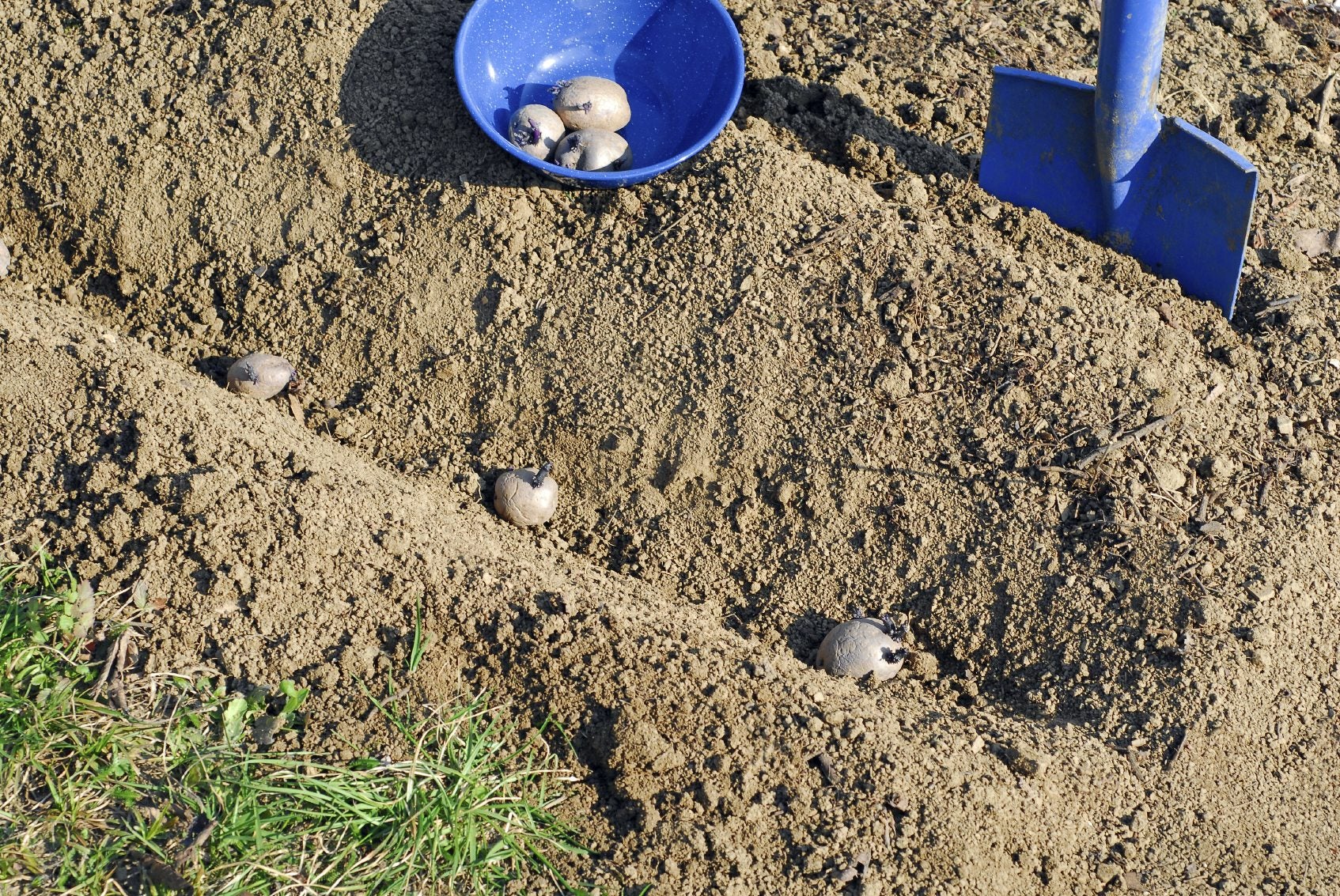Potato Bed Preparation: Prepping Beds For Potatoes

Incredibly nutritious, versatile in the kitchen, and with a long storage life, potatoes are one of the must haves for the home gardener. Properly preparing a potato bed is the key to a healthy, prolific potato crop. There are a number of potato bed preparation methods. What kind of potato seed bed preparation do you need to do to guarantee a bumper crop? Read on to learn more.
Prepping Beds for Potatoes
Properly preparing beds for potatoes is of primary importance. Neglecting potato bed preparation may result in inferior crops. Improperly prepared beds may be predisposed to soil compaction and poor aeration and drainage, three things that potatoes abhor. Consider what type of previous crop was in the bed. Be sure that any debris has been well composted and avoid planting in the area if it was recently planted with any other Solanaceae members (nightshade family) to reduce the risk of passing on bacteria or virus pathogens. Instead, plant the area with a legume crop and move to another area for potato bed planting. Potato bed planting should take place in rich, loose, well-draining but moist soil with a slight acidity of pH 5.8 to 6.5. One month to six weeks prior to planting, loosen the soil down to a depth of 8 to 12 inches (20-31 cm.) and add 3 to 4 inches (8-10 cm.) of compost or a complete organic fertilizer with a NPK of 1-2-2 (5-10-10 is acceptable) at a rate of 5 pounds (2 kg.) per 100 square feet (9.29 sq. m.). In lieu of the previous, you may also amend the soil with 3 to 4 inches (8-10 cm.) of composted steer manure or one inch (2.5 cm.) of composted chicken manure, 5 to 7 pounds (2-3 kg.) of bone meal per 100 square feet (9.29 sq. m.) and a smattering of kelp or seaweed meal. When in doubt of your soil's nutritional needs, contact your County Extension office for assistance. When prepping beds for potatoes, remember they are heavy feeders, so adequate nutrition at the outset is crucial. Till all the amendments into the soil and turn several times. When preparing a potato bed, rake the bed smooth, removing any large stones or debris. Water in well to test for soil drainage; if the bed doesn't drain well, you will need to add organic matter, clean sand, or even commercial soil. Drainage is of paramount importance. Potatoes will rapidly rot in sodden soils. Many people grow potatoes in a hill or mound which will also ensure that plants are above any standing water. Elevate beds 10 to 12 inches (25-31 cm.) in this case.
Additional Potato Bed Planting
If you don't want to take the time preparing a potato bed, you may also choose to grow your potatoes by using straw or mulch. Simply loosen the soil so the roots get good aeration, food, and irrigation. Place the seed potato atop the soil and cover with 4 to 6 inches (10-15 cm.) of straw or mulch. Continue to add 4 to 6 inches (10-15 cm.) to cover new leaves and shoots as the plant grows. This method makes for an easy and very clean harvest. Just pull the mulch back, and voila, nice clean spuds. Another easy potato bed preparation involves using the mulching method above, but in a container or bin instead of on the soil surface. Make sure the container has drainage holes; you don't want to drown the tubers. Be sure to water more frequently than if you planted the potatoes in the garden, as container grown plants dry out more rapidly. Now that your potato seed bed preparation is complete, you can plant the seed potatoes. The earliest you should plant is two weeks before the last frost date in your area. Soil temps should be between 50 and 70 degrees F. (10-21 C.). Taking time when prepping beds for potatoes will ensure healthy, disease-free tubers that will feed you and your family all winter long.
Gardening tips, videos, info and more delivered right to your inbox!
Sign up for the Gardening Know How newsletter today and receive a free copy of our e-book "How to Grow Delicious Tomatoes".

Amy Grant has been gardening for 30 years and writing for 15. A professional chef and caterer, Amy's area of expertise is culinary gardening.
-
 Looking For Plants To Give You The Soft And Fuzzies? Try These 5 Fuzzy Leaf Plant Options
Looking For Plants To Give You The Soft And Fuzzies? Try These 5 Fuzzy Leaf Plant OptionsLovers of texture, drama, silver foliage and tactile plants will adore these special sensory garden additions. These fuzzy leaf plant options will leave you all aglow
By Susan Albert
-
 Get Ready For A Summer Of Hummers! Grow These Full Sun Hummingbird Plants and Flowers
Get Ready For A Summer Of Hummers! Grow These Full Sun Hummingbird Plants and FlowersIf you’re lucky enough to enjoy a sunny backyard, make sure you are maxing out on your pollinator opportunities and grow these full sun hummingbird plants and flowers
By Tonya Barnett